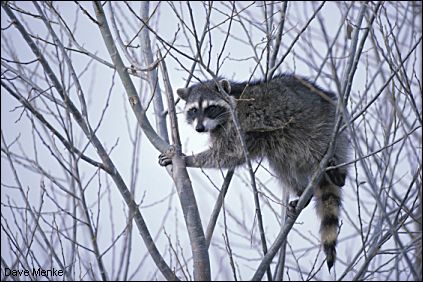

In cartoons, burglars are so commonly pictured with a black mask surrounding the eyes, that it's become a stereotype. Animals with a similar mask tend to be automatically tossed into the same bin, and perhaps with the bandit-masked Raccoon, rightly so. Certainly that's the case if you consider raiding garbage cans as the animal equivalent of burglary. And this brings up an interesting question—do we in the Chihuahuan Desert have Raccoons largely because of our garbage?
Now this may sound strange, but it appears that Raccoons are relative newcomers to the northern desert region. The fossil record from the latter portions of the last ice age is extensive, and Raccoon fossils are in central Texas and in the Californian sites. But none has turned up in our region. Even the archaeological record appears to be without this creature until late times. If we look at where Raccoons are common today, it seems to be the river valleys, where human habitation is high, or around mountain villages with their garbage dumps and campgrounds—prime attractive nuisances.

Contributor: Arthur H. Harris, Laboratory for Environmental Biology, Centennial Museum, University of Texas at El Paso.
Desert Diary is a joint production of the Centennial Museum and KTEP National Public Radio at the University of Texas at El Paso.

A Raccoon (Procyon lotor) climbing in a tree. Photograph by David Menke, courtesy of the U.S. Fish and Wildlife Service.
Seidensticker, J. 1999. Northern Raccoon/Procyon lotor. Pp. 221-223, in D. E. Wilson and S. Ruff, eds., The Smithsonian Book of North American Mammals, Smithsonian Institution Press, Washington, D.C. 750 pp.